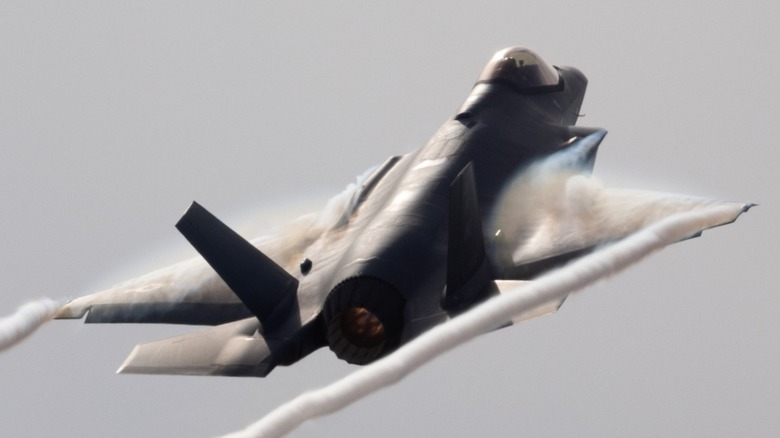India is actively considering the purchase of a highly advanced fifth-generation fighter jet from a friendly country.
India Explores Quick Fighter Jet Deal Amid Urgent Needs
This step is seen as a fast-track solution to enhance India’s aerial combat strength while it waits for its own indigenous jet to be developed. This decision comes during a time when India is keeping a close watch on growing military developments in neighboring regions.
India is currently working on the AMCA (Advanced Medium Combat Aircraft), a fifth-generation stealth jet being built within the country. However, this project is still under development and is expected to take around 8 to 10 years before it is ready for operational use in the Indian Air Force. Given the long timeline, India is now looking at other options that can serve the country’s needs in the short term.
This search has led to offers from two major global defense partners. The United States has proposed its F-35 fighter jet, while Russia has offered its Su-57. Experts classify both aircraft as fifth-generation jets and design them with stealth, speed, and multi-role combat capabilities. Aviation authorities regard these jets as some of the most advanced in the world. They can perform a wide range of missions, including air-to-air combat, ground attacks, and surveillance.
India Ditches F-35 and Su-57 Talks, Powers Ahead with Homegrown AMCA Stealth Jet
India is viewing this potential purchase not just from a technology perspective, but also from a strategic and geopolitical standpoint. Strengthening ties with the country that provides this jet could influence future defense cooperation, joint projects, and regional alliances.
F-35 vs Su-57: India’s Tough Choice Between Two Military Giants
As of now, India has not publicly revealed whether it is more inclined towards the American F-35 or the Russian Su-57. However, both jets have unique features that make them attractive options.
The United States developed the F-35 as a single-engine stealth aircraft. NATO allies widely use it, and it features advanced sensors, communication systems, and a radar-evading design. Its high level of digital connectivity allows it to coordinate operations with ground and naval forces.
In contrast, Russia developed the Su-57 as a twin-engine stealth aircraft. It supports high-speed combat, achieves supercruise (flying at supersonic speed without afterburners), and offers advanced maneuverability. It also carries state-of-the-art electronics and can engage in both close-range dogfights and long-range missions. Russia has promoted the Su-57 as one of its most advanced weapons and has offered India a package that includes more than just the aircraft.
Crippling US Sanctions Endanger SU-57 Fighter Jet Program of Russia
What sets the Su-57 offer apart is the proposal to transfer technology. Russia has reportedly agreed to share the fighter jet’s source code, provide local assembly options under the ‘Make in India’ initiative, and offer support for India’s own AMCA program. This kind of deep cooperation could be a valuable boost for India’s defense industry and technological capabilities.
India had earlier shown interest in jointly developing the Su-57 but the project did not move forward due to unresolved technical and strategic differences. This time, the proposal appears more flexible and better aligned with India’s goals.
Putin’s Visit to India to Strengthen Defense Ties
A key meeting between India and Russia is scheduled for September during the annual ‘India-Russia Summit’ in Delhi. The event is expected to focus on major defense collaborations, including the possible fifth-generation fighter jet deal.
Several defense experts believe that India needs an immediate solution to balance the rapid military expansion of countries like China and Pakistan. These countries have added advanced jets to their air forces, raising concerns in India about maintaining air superiority. A stop-gap solution until the AMCA is ready is now seen as necessary.
Planes Before Peace Talks? India and China Eye Air Link Before Border Resolution
Russia has indicated that if India decides to purchase the Su-57, it will not only deliver the jets but also help India develop its own fifth-generation aircraft by sharing key technologies. This includes engine know-how, software systems, and other critical components.
The proposed fighter jet deal is more than just a sale—it could represent a major shift in defense cooperation and industrial capability. By bridging the gap between immediate needs and long-term goals, India hopes to stay ahead in the changing security landscape of the region.

